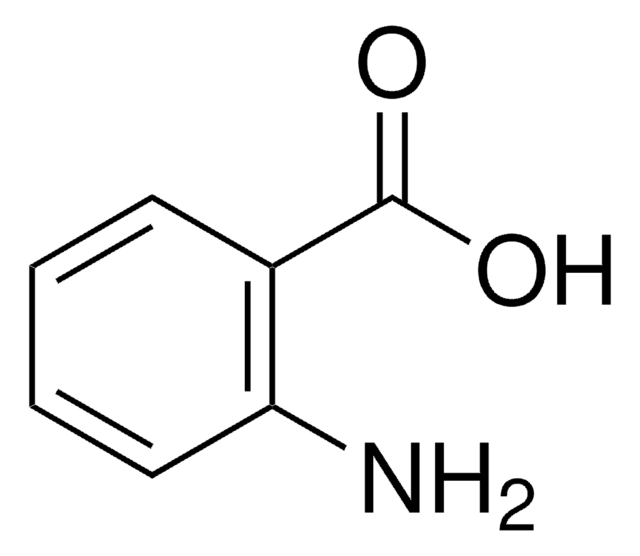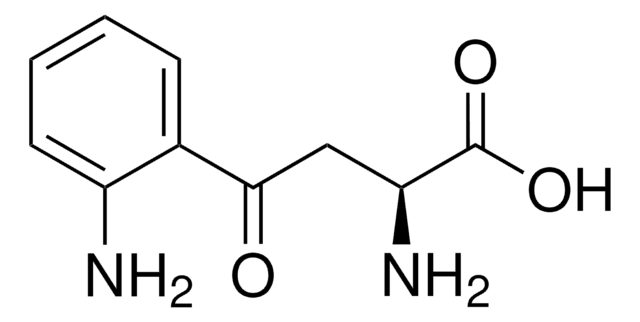D120804
Xanthurenic acid
96%
Synonym(s):
4,8-Dihydroxyquinaldic acid, 4,8-Dihydroxyquinoline-2-carboxylic acid
Sign Into View Organizational & Contract Pricing
All Photos(1)
About This Item
Empirical Formula (Hill Notation):
C10H7NO4
CAS Number:
Molecular Weight:
205.17
Beilstein:
185954
EC Number:
MDL number:
UNSPSC Code:
12352100
PubChem Substance ID:
NACRES:
NA.22
Recommended Products
Assay
96%
form
powder
mp
297-298 °C (dec.) (lit.)
SMILES string
OC(=O)c1cc(O)c2cccc(O)c2n1
InChI
1S/C10H7NO4/c12-7-3-1-2-5-8(13)4-6(10(14)15)11-9(5)7/h1-4,12H,(H,11,13)(H,14,15)
InChI key
FBZONXHGGPHHIY-UHFFFAOYSA-N
Looking for similar products? Visit Product Comparison Guide
Application
Xanthurenic acid can be used as a substrate for the synthesis of:
- Silica-gel functionalized xanthurenic acid (4, 8-dihydroxyquinoline-2-carboxylic acid) as an adsorbent for metal ions.
- N, N′-bis-((8-hydroxy-7-quinolinyl)methyl)-1,10-diaza-18-crown-6 ethers as fluorescent sensors of magnesium in living cells via one-pot Mannich reaction.
- Poly-xanthurenic acid (poly-Xa) for biosensing applications.
Storage Class Code
11 - Combustible Solids
WGK
WGK 3
Flash Point(F)
Not applicable
Flash Point(C)
Not applicable
Personal Protective Equipment
dust mask type N95 (US), Eyeshields, Gloves
Choose from one of the most recent versions:
Already Own This Product?
Find documentation for the products that you have recently purchased in the Document Library.
Customers Also Viewed
Poly-xanthurenic acid modified electrodes: An amperometric sensor for the simultaneous determination of ascorbic and uric acids.
dos Santos Silva F D A, et al.
Sensors and Actuators B, Chemical, 168, 289-296 (2012)
Synchronous electrosynthesis of poly (xanthurenic acid)-reduced graphene oxide nanocomposite for highly sensitive impedimetric detection of DNA.
Yang T, et al.
ACS Applied Materials & Interfaces, 5(9), 3495-3499 (2013)
Synthesis of silica-gel immobilized xanthurenic acid and its application to the preconcentration/determination of trace metals in natural water samples
Kasahara I, et al.
Bunseki Kagaku, 47(12), 1061-1067 (1998)
Electrochemical determination of ascorbic acid using poly (xanthurenic acid) and multi-walled carbon nanotubes
Lin K-C, et al.
International Journal of Electrochemical Science, 7(12), 12752-12763 (2012)
Photooxidation of Lens Proteins with Xanthurenic Acid: A Putative Chromophore for Cataractogenesis.
Roberts J E, et al.
Photochemistry and Photobiology, 74(5), 740-744 (2001)
Our team of scientists has experience in all areas of research including Life Science, Material Science, Chemical Synthesis, Chromatography, Analytical and many others.
Contact Technical Service










